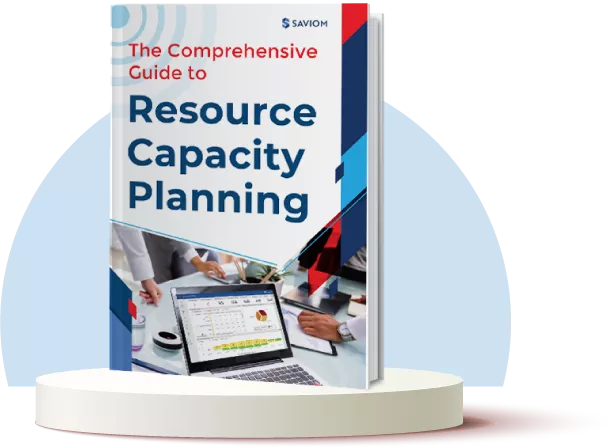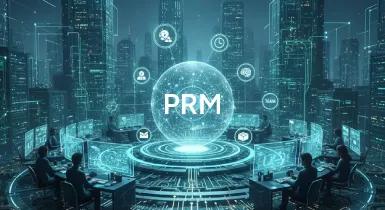According to a report by the Standish Group, “66% of technology projects fail partially or fully due to various risks.”
No project is entirely risk-proof, and IT projects, in particular, face a wide array of risks, ranging from frequent changes in client requirements to escalating costs and schedule delays. These IT project risks are not just occasional disruptions; they are critical threats that can derail progress and result in severe underperformance or complete failure.
Thus, robust risk management becomes essential in IT projects. By identifying risks as early as possible and developing mitigation strategies, organizations can significantly improve project outcomes and reduce the likelihood of failure.
In this blog, we will explore the various IT project risks that threaten success and provide actionable solutions to mitigate them.
But first, let’s understand why risk management is important for IT projects.
What is the Importance of Risk Management in IT Projects?
Risk management is crucial in IT projects as it helps identify potential threats early, allowing teams to proactively address issues before they escalate. It involves identifying, analyzing, and categorizing IT project risks, developing appropriate risk responses, and monitoring them on an ongoing basis. This enables managers to proactively minimize the likelihood or impact of various project risks and ensure successful delivery.
Moreover, by analyzing risks that can impact the project schedule and budget, managers can forward plan and allocate resources competently and set realistic deadlines. It leads to better project performance and higher client satisfaction. Furthermore, regular risk assessments keep stakeholders in the loop about the probable threats and what measures are in place to effectively address them.
Thus, it helps build stakeholders’ trust and reassure them about the project’s progress. Lastly, managers can document the project risk management framework of the current projects and apply it to future endeavors. They can use these insights to improve IT project risk mitigation practices over time and enhance pipeline delivery.
Now that you know the significance of mitigating project management risks, let’s understand what it entails and how to define project risk.
IT Risk Management Framework
The following is a detailed description of a streamlined framework of risk management in projects.
Risk Identification
Having proper knowledge about the potential risks that can occur anytime during the project lifecycle helps to brace and deal with them better. Therefore, the first step is to identify the threat. For that, you can brainstorm with the project members and determine the risk. Based on that, you may create a risk register to document the identified risks.
Risk Analysis
In this step, you will have to determine the impact of the risks. For this, you may categorize the risks into core or non-core risks. Core risks must be mitigated immediately as they can hamper project growth or team productivity. On the other hand, non-core risks can be managed gradually, as they do not pose an urgent threat to project progress.
Read More: How to Mitigate Resource Risk in Project Management?
Risk Assessment
The next step is assessing the nature and effect of the risks. There are two types of threats- positive risks and negative risks. Positive risks can be implemented in the project, whereas negative risks have to be mitigated. You can create a risk matrix to evaluate and categorize these threats based on their impact and likelihood.
Risk Treatment
This is the most crucial step in the whole framework. Here, you will need to develop risk response strategies such as avoidance, transfer, mitigation, or acceptance for each risk. You must assign risk owners who will be responsible for implementing the response strategies.
Risk Monitoring
The last step of the process is to monitor the aggregate risk measures to ensure that risk levels remain optimal. It involves regularly reviewing and updating the risk register to reflect any changes in risk status. Moreover, you must periodically assess risk response strategies and update the project stakeholders about the current status.
Read More: Enterprise Risk Management Framework: 8 Core Components
Now, let’s learn about the various types of software development project risks.
What are IT Project Risks?
Here is a rundown of different types of IT project risks:
Scope Creep
Scope creep is inevitable, and almost every IT project will experience it at some stage . The probability of scope creep increases depending on the size and complexity of the project. These are caused mainly by the changing requirements of stakeholders or clients. Ultimately, the whole project can look very different from what was initially envisioned.
Unclear Requirements
There may be situations where the client wants something particular, but the project team has misconstrued the requirements. This lack of clarity mainly occurs due to poor communication between clients, stakeholders, and the project team. Unclear requirements may lead to unfinished tasks, a complete or partial change of the deliverable, schedule changes, extra resources, etc.
Budget and Schedule Overrun
According to a McKinsey joint research report, “On average, large IT projects run 45 percent over budget and 7 percent over time.”
Similar to scope creep, schedule, and budget overruns are critical IT project risks. These issues are often interconnected; for instance, changing the scope of a project causes cost escalations and extends the timeline. Other factors that can lead to schedule and budget overrun include inaccurate budget estimation, allocating high-cost local resources, and unrealistic scheduling.
Read More: 5 Ways to Reduce Project Management Costs
Managing a Global Team
Managing a global team presents challenges like time zone differences, cultural variations, and communication barriers. These issues can lead to misunderstandings and misalignment, affecting team collaboration and project timelines. Teams may also struggle to establish trust and build strong relationships, which can hinder project workflow.
Technology Risks
Technological risks occur when an implementation does not work as anticipated. These risks may lead to security breaches, system failures, and increased maintenance time. Even with the most comprehensive technical documentation and the best training models and algorithms in place, components can still misfire and generate errors.
Employee Burnout
Employee burnout is a major IT project risk, often caused by excessive workloads, tight deadlines, and long working hours. Over time, this leads to decreased productivity, lower morale, and higher attrition rates, which can severely impact project outcomes and team performance.
Read More: How Workforce Planning Prevents Employee Burnout Down the Line?
Change Resistance
Change resistance occurs when team members or stakeholders push back against the implementation of new processes, tools, or requirements in an IT project. This resistance can slow progress and create confusion, especially without a framework in place to accommodate and manage changes smoothly.
Prolonged Absences and Unplanned Attrition
Prolonged absences and unplanned attrition can severely disrupt the momentum of IT projects. Losing key personnel unexpectedly creates knowledge gaps, slows down task execution, and hampers productivity, especially when replacements or backups are not immediately available.
Resource Shortages and Skill Gaps
Resource shortage and skill gaps are significant issues that haunt IT project managers. These arise when resource demand exceeds availability or when the available personnel lack the required expertise. One of the main reasons behind this resource scarcity is the lack of visibility into future capacity and skill requirements.
Read More: How Can Retraining/Upskilling Future-Proof Your Workforce?
Communication Breakdown
Communication breakdowns in IT projects pose serious risks as it can lead to unclear expectations and unintended deviations from the original plan. Furthermore, such misunderstandings can lead to conflicting priorities, further complicating team collaboration and impeding project success.
Regulatory and Compliance Risks
Regulatory and compliance risks arise when IT projects fail to meet legal, security, industry, or organizational standards. These risks can arise from failing to comply with data privacy laws, cybersecurity requirements, or software licensing agreements. Non-compliance can result in severe penalties, including legal actions, fines, and reputational damage.
Vendor Dependency
Vendor dependency risk in IT projects occurs when an IT firm relies heavily on external vendors for critical services – personnel, software, or hardware. This dependency can pose significant challenges, especially if the vendor fails to deliver on time, provides subpar quality, or discontinues support. Such risks can disrupt project timelines, increase costs, and negatively impact project outcomes.
Having understood the different types of risks in project management, let’s learn about the strategies that can help mitigate IT project risks.
Risk Mitigation Strategies for IT Projects
One can avoid all the risks mentioned above by following good risk management practices. They are:
Devise a Comprehensive Project Scope
To mitigate the risk of scope creep, it’s essential to create a detailed project scope that clearly outlines the objectives and deliverables. This ensures all stakeholders are aligned from the beginning, preventing misunderstandings and scope changes in later stages. By setting clear expectations and limits, the team can stay focused, avoid unnecessary changes, and ensure the project progresses efficiently and within its original plan.
Read More: What is Scope Creep, and How to Avoid it in Project Management?
Clearly Define Project Requirements
It is crucial to articulate project requirements in detail and without ambiguity. This level of precision enables all stakeholders to have a shared understanding of the project’s goals. Further, by working with the exact specifications set by the clients, the team can deliver the project on time and without deviation, significantly enhancing the chances of project success.
Set a Realistic Budget and Deadline and Track Regularly
Project managers must establish a realistic budget and deadline at the outset. Thereafter, they should periodically track timelines and compare the actual spending against the estimated budget. If there is a variance, then managers must apply corrective measures. Thus, monitoring progress against these benchmarks allows for timely adjustments and ensures the project progresses as planned.
Read More: 5 Steps to Develop a Reasonable Project Budget That Gets Approved
Use a Modern Resource Management Software
Utilizing modern resource management software is essential for effectively managing a global team. These holistic tools provide real-time visibility into resource allocation, skills, and availability across different time zones. They streamline communication and facilitate collaboration. They also help managers make informed decisions to find low-cost resources within the project budget.
Create an Alternative Technology Option
To mitigate technological risks, it’s crucial to set up alternative technology options. This means identifying backup systems and tools that can be swiftly implemented if the primary technology fails. With a contingency plan and alternatives ready, teams can minimize downtime, ensure continuity, and maintain project momentum despite unexpected technical challenges.
Ensure That There is No Overloading
It is essential to ensure that team members are not overloaded with tasks. Regularly assessing resource utilization and redistributing responsibilities evenly through resource-leveling and smoothing helps maintain a healthy work-life balance. If needed, project managers can hire additional resources to prevent overburdening existing staff and improve employee productivity.
Implement a Robust Change Control Process
Establishing a formal change control process is vital for managing modifications effectively without disrupting project flow. This process ensures that all changes are thoroughly reviewed, assessed, and approved by the CCB (Change Control Board) before implementation. By documenting changes and their impacts, teams can maintain project stability and ensure alignment with the project’s overall objectives.
Read More: How Can You Improve Organizational Change Management Strategies?
Keep a Back-Up Resource for Critical Tasks
Having a backup resource for critical tasks is essential to mitigate risks associated with employee absences or unforeseen issues. By designating an alternate team member, project managers can ensure continuity. This proactive approach helps maintain the pace of the project and safeguards against disruptions to key milestones and timelines.
Leverage Multi-Skilled or Contingent Resources
Utilizing multi-skilled or contingent resources helps project managers respond more effectively to shifting requirements or unexpected challenges. Team members with diverse skill sets can step in where needed, preventing workflow interruptions and schedule delays. Moreover, contingent resources can provide flexibility by filling temporary gaps or handling specialized tasks.
Read More: What is a Contingent Workforce, and Why an Organization Needs It?
Establish a Proper Communication Plan, Including Documentation
A well-defined communication plan ensures clarity among team members and stakeholders. This plan should outline communication channels, frequency, and protocols for sharing project updates. Additionally, maintaining thorough documentation fosters transparency, reduces misunderstandings, and provides a reliable reference point, ultimately enhancing collaboration.
Develop a Compliance Framework
A compliance framework is essential for ensuring adherence to legal and industry regulations. This framework should outline necessary policies, procedures, and monitoring processes. Additionally, providing compliance training to key stakeholders will enhance their understanding and commitment. This reduces the risk of regulatory violations and promotes a culture of compliance within the organization.
Diversify Vendors and Include Clear SLAs in Contracts
By diversifying the list of empaneled vendors, project managers can reduce dependency risks. They can also establish clear Service Level Agreements (SLAs) in contracts to set expectations and accountability. Additionally, they can review the vendor empanelment process annually so that if a vendor’s performance is unsatisfactory, they can be replaced with a new one.
Conclusion
There is no IT project without risks. As a project manager, you must pay attention to every detail and monitor the project’s progress. In a nutshell, you must have an effective risk management strategy, as mentioned above. That way, you can eliminate IT project risks and ensure successful delivery.
The Glossary
Read More: Glossary of Resource Workforce Planning, Scheduling and Management












